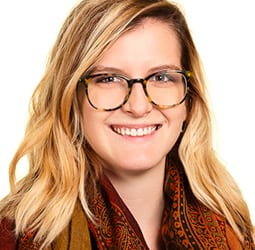Five Answers is a weekly series that features a member of the newspaper industry answering five questions. If you’d like to participate, email kirsten.ballard@naa.org.
 Rafael Carranza is the Digital Producer and Reporter at La Voz. He is also one of NAA’s Top 30 Under 30 award winners. His bilingual skills give him an edge in the newsroom, where he helps bridge language barriers. He is the guy live-tweeting, writing, setting up his own camera and helping colleagues. This jack-of-all-trades reporter speaks up for those without a voice.
Rafael Carranza is the Digital Producer and Reporter at La Voz. He is also one of NAA’s Top 30 Under 30 award winners. His bilingual skills give him an edge in the newsroom, where he helps bridge language barriers. He is the guy live-tweeting, writing, setting up his own camera and helping colleagues. This jack-of-all-trades reporter speaks up for those without a voice.
1. What drew you into news media?
I knew I wanted to become a journalist ever since I was in high school. During my sophomore year, I signed up for the class to produce our school newspaper, the Desert Howl at Agua Fria High School. It simply piqued my interest out of curiosity, but increasingly became my passion as I rose to an editor position my senior year. I greatly enjoyed writing about and for my fellow students, but more importantly, I felt there was a need to represent certain voices that were otherwise missing. Half of my school was Latino, and a majority of them Spanish-speaking. Along with another writer, we launched a Spanish-language section within the newspaper where we highlighted students, teachers, programs and stories of interest to Latino students.
In college, I chose to go into broadcast journalism because of its immediacy and the impact that television still has to this day. Here also, I spearheaded the creation of a Spanish-language broadcast, which continues to this day at my school, the Walter Cronkite School at Arizona State University. Again, I felt there were voices missing that lacked representation and in creating the newscast we filled a gap, while allowing us to grow as bilingual reporters.
2. As an NAA Top 30 Under 30 winner, do you consider your age an advantage or disadvantage in the industry? Why?
My age is definitely an advantage. Journalism has changed so quickly, and I feel that as someone who grew up with the rise of social media, I am better prepared to handle some of these changes. In college, I learned how to write, shoot and edit my own video, which is now the standard across many newsrooms. Because I started using social media tools like Facebook and Twitter before they became valuable reporting tools, it made incorporating them into my reporting that much easier. And in a way, I think someone who is younger and perhaps not as established or experienced is also more open to change.
3. What work are you most proud of?
I think my best work is still ahead. I have begun incorporating new tools and elements into my reporting, and acquiring the skills to carry out investigations. But, I’m also proud of the work I’ve accomplished so far. One of the things I am most proud of as a producer is a weekly video segment we record in Spanish highlighting our main stories, which airs on the 10:00 p.m. news for our local Univision affiliate. It’s extremely rewarding because it gives us greater exposure, and given my experience in broadcast, it’s my duty to put our best face and work forward. From a reporting perspective, I am very happy with our coverage of Pope Francis’ visit to the U.S.-Mexico border in February. I was able to lead the team coverage of the event, and I am greatly satisfied with the stories we covered, the people we spoke to and the context we provided to such a historic occasion.
4. Describe a “typical” day on the job.
My position at La Voz is hybrid, meaning that I have several responsibilities and therefore my typical day varies greatly. Two days a week, I am content producer. During these days, I help manage our website, updating and creating content, as well as working with reporters to create a visual presentation of the story that will engage readers. This work includes creating interactive graphics, or incorporating photo or video, among other things. During these days, I am also responsible for managing our social media sites, pushing our content in the best way to attract readers.
The other three days of the week, I am a general assignment reporter. I get to cover a number of stories focused on the Latino community in Arizona. My focus at the moment is on election coverage, which also includes a lot of education about the election process given that many of our readers are newly arrived immigrants or first time voters. As a bilingual journalist, I am also constantly on the lookout for opportunities to collaborate or contribute to coverage in The Arizona Republic, our sister publication.
5. What do you see as the future of news media?
Working at Republic Media, I’ve seen first-hand the focus shift from print publications to a strong online presence. I think that shift will accelerate further in the coming years. I do think the trend for local newspapers is to become go-to sources for news and especially for fun in your local area. But I also think the future of news media includes a strong role in holding people accountable through watchdog and investigative journalism.

Contributing writer

